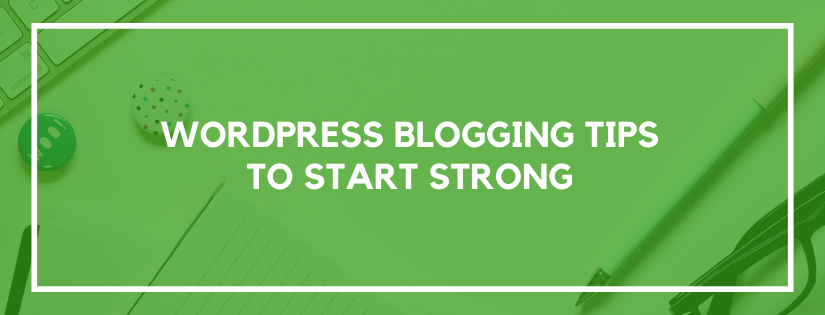Building your blog, or your entire website, on WordPress is a great option. It offers flexibility, documentation, and a ton of community support. There are thousands of themes and plugins that you can use to create just about any functionality you can think of.
But, sometimes the vast number of options available can be overwhelming. To cut through some of the clutter we’ve put together five WordPress blogging tips you can follow to start strong.
Tip #1: Use a Responsive Theme
You want your website to be mobile friendly. You don’t want to get stuck duplicating content and wasting valuable time. When you’re looking for a WordPress theme, make sure it’s responsive. Start with a responsive theme from the very beginning.
When a theme is responsive, that means the width of the website can readjust to fit on mobile, tablet, or desktop. Depending on the device size, the elements on your website will be displayed differently.
On a desktop, you might have a four column layout. On mobile, those columns would be stacked on top of each other vertically instead. On a tablet, they might be displayed as a two column layout with two rows.
This allows for a great user experience regardless of what device people use to access the website.
Tip #2: Use Only the Plugins You Need
Plugins are great. They make it easy to add complex functionality to a WordPress site without knowing how to code. For the most part, they are plug and play. You download one, activate it, configure a few settings to specify your needs, and it’s good!
There’s nothing wrong with using plugins, but you only want to use the plugins you need. The more you use, the more potential issues you’ll run into. Normally, plugins are fine. But, sometimes, they can conflict with each other.
Since adding plugins is so easy, it’s also easy to have way more than you need. Sometimes when I’m looking for a new plugin I end up downloading about five plugins. I try them all and then decide one is the best and go with it.
There’s nothing wrong with that. But when you’re done, remove what you aren’t using. Don’t just deactivate it. Completely delete it so it doesn’t appear in your list of plugins anymore. If you don’t delete it you will still need to update it and you still have those files on your server.
So, if you need a plugin, use it. If you install it, don’t like it or don’t need it, get rid of it. Don’t let it be a possible vulnerability.
The same thing goes with themes. There’s no need to keep the default themes if you aren’t using them.
Tip #3: Be Cautious with Customizations
If you want to change the way a plugin or theme works, try to change it in the available settings first. Don’t play with the code unless you have to. If you don’t understand code, stay out of it.
If you make the customization directly in the plugin or theme code it will get overwritten when there’s a new update. That means your change will be gone and there’s a chance you will break something unexpected.
Always look through the available settings first. Most themes will have a dedicated area for you to add custom CSS and javascript.
Plugins normally offer quite a few customization settings as well. Chances are you’ll be able to find a settings interface to control the element you want to manipulate. And if you don’t, try a different plugin. Editing the plugin code should be a last resort.
Tip #4: Download Yoast SEO
You want to start off by adding SEO elements such as meta descriptions to your pages from the very beginning. It will be easiest to optimize your posts for search engines as you create them instead of going back and editing several existing pages when you decide to focus on it.
There are a few different SEO plugins worth using. I like to use Yoast SEO. They allow you to specify the target keyword for the page and then they have a checklist to quickly identify what remaining optimizations need to be added to the post.
Tip #5: Have a Plan for Backup and Security
Your blog will be a place you end up putting a lot of time and hard work into. You want to make sure you have a backup plan.
WordPress normally runs great. I can count on one hand the number of failed updates I’ve had in the last decade and none of them ended up needing to be restored from a backup. But still, things happen, and you want to be prepared.
I like to use UpdraftPlus for backups. It’s a plugin. You can run a backup before you run updates so you have a fresh copy in case there is an issue. You can also schedule it to run backups on a regular basis and save them somewhere else such as Dropbox or Amazon S3.
And just as important as a backup, you also want to make sure your site is secure. I like using Wordfence for this. It’s another plugin. It’s a great safeguard to have in place so you’re getting notified of any suspicious activity on your website.
Just follow these five tips and you’ll be off to a great start!
Do you want to listen to this article? Here’s the podcast episode:
